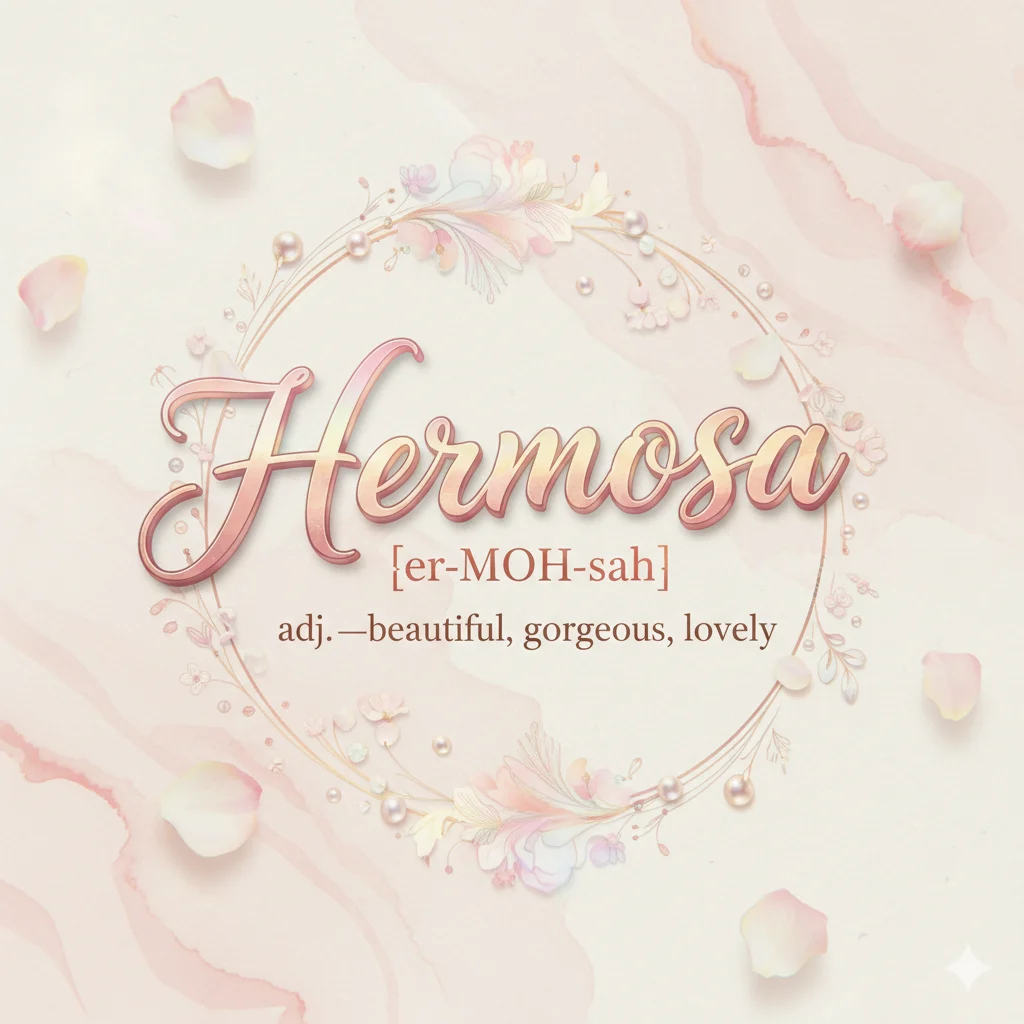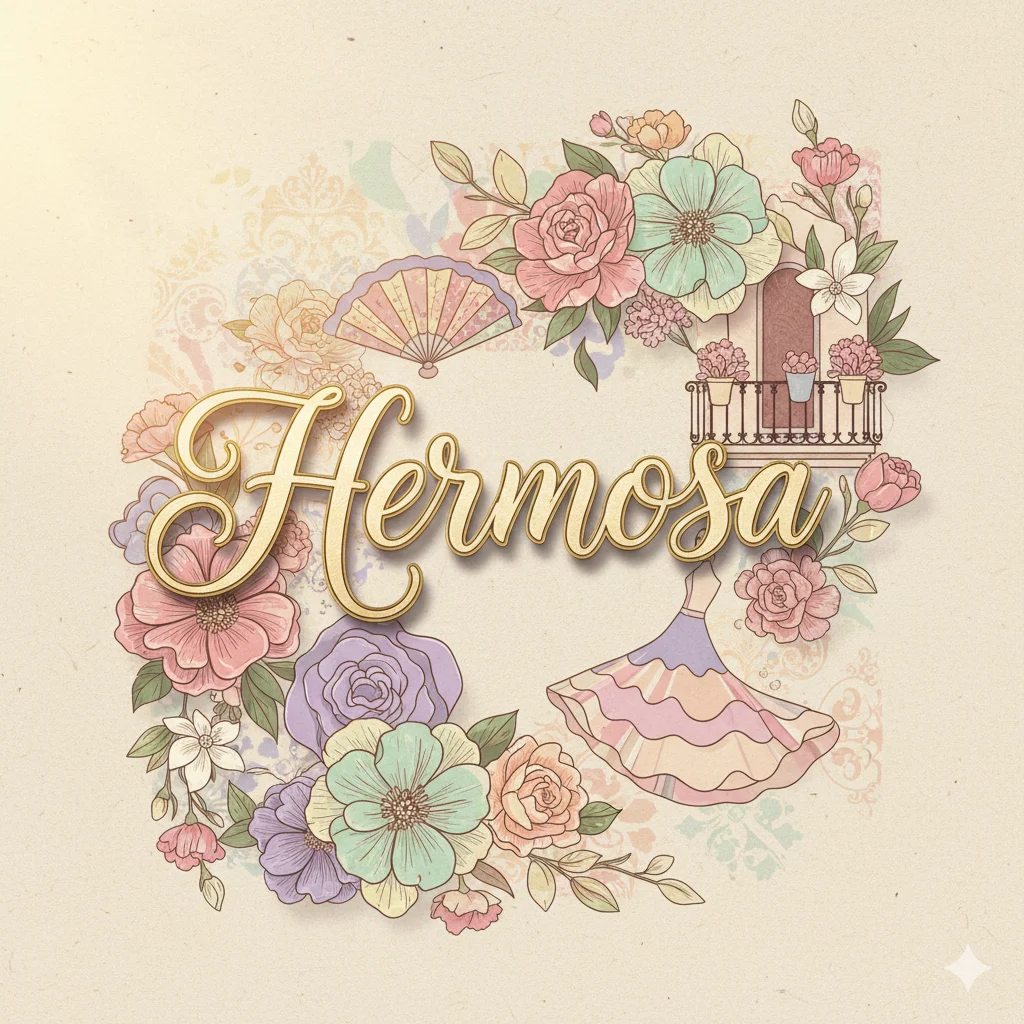If you’ve come across the word hermosa online, in a text message, or while watching a Spanish-language show, you may have paused and wondered what it really means. As global communication increases, certain Spanish words—especially compliments—show up frequently in English conversations, TikTok captions, Instagram comments, and cross-cultural exchanges.
One of the most popular among them is hermosa. Although it’s a simple word, its emotional tone, cultural significance, and proper usage carry important nuances that help you communicate respectfully and authentically.
Understanding What Does Hermosa Mean? can elevate your communication, help you avoid misunderstandings, and even allow you to appreciate the beauty of Spanish expressions.
Whether someone called you hermosa, you want to use the word for someone else, or you’re learning Spanish for travel or connection, this guide will break down everything you need to know—definitions, origins, examples, contexts, and synonyms. Let’s explore the full meaning and impact behind the word hermosa.
Definitions & Meaning

The word hermosa is a Spanish adjective that translates to “beautiful,” “gorgeous,” or “lovely” in English. It is specifically the feminine form of the adjective hermoso. Spanish adjectives change depending on gender, so:
- Hermosa = feminine
- Hermoso = masculine
When used to describe a person, hermosa expresses a deep, sincere level of beauty—not only physical attractiveness but often a blend of charm, elegance, and inner warmth. It can feel more poetic or romantic than simpler terms like bonita (“pretty”).
Examples of Use
- Ella es tan hermosa. — She is so beautiful.
- ¡Buenos días, hermosa! — Good morning, beautiful!
- La vista es hermosa. — The view is beautiful.
The tone ranges from romantic to friendly to poetic depending on the context.
Origins & History

The term hermosa traces back to the Latin word formosus, which meant “beautiful,” “well-shaped,” or “graceful.” As Latin evolved into early variants of Spanish, the word shifted from formosus to fermoso and eventually to the modern forms hermoso and hermosa.
The letter shift from f → h is a well-documented historical pattern found in many Spanish words.
Culturally, hermosa has deep roots in:
- Spanish literature
- Latin American poetry
- Romantic symbolism
- Descriptions of nature and aesthetics
You’ll find the word throughout romantic songs, novels, and classic poetry where beauty is associated with emotion and admiration.
Usage in Different Contexts

1. Social Media
Hermosa appears frequently in captions, compliments, and comments:
- “Feliz cumpleaños, hermosa!”
- “You look hermosa today.”
2. Romantic Conversations
Partners often use it warmly or flirtatiously:
- Hola, hermosa.
- Eres tan hermosa que me dejas sin palabras.
3. Friendly Use
Women often call each other hermosa as a form of empowerment or support.
4. Scenery & Aesthetics
- La playa es hermosa.
- Qué noche tan hermosa.
5. Artistic & Cultural Use
Writers and musicians use hermosa metaphorically to portray elegance, emotion, and poetic imagery.
Common Misunderstandings & Clarifications

Misunderstanding #1: It only means physical beauty.
False. It can refer to inner beauty, emotional warmth, or meaningful experiences.
Misunderstanding #2: It’s always romantic.
False. Tone and relationship decide the meaning.
Misunderstanding #3: Only men use it for women.
False. Women commonly use it for other women.
Misunderstanding #4: It’s the same as ‘bonita.’
Not quite—hermosa is deeper and more expressive.
Misunderstanding #5: It cannot describe objects.
It can describe landscapes, music, events, and more.
Alternatives & Synonyms

Spanish offers several synonyms, each with its own tone:
1. Bonita
Meaning “pretty,” more casual.
2. Bella
Elegant and poetic.
3. Guapa
Common in Spain; bold and confident.
4. Linda
Soft, cute, charming—popular in Latin America.
5. Preciosa
Sweet, affectionate, romantic.
Each can be chosen depending on emotional intent and relationship.
Frequently Asked Questions (FAQ)
1. What does hermosa literally translate to?
Beautiful, gorgeous, or lovely.
2. Is hermosa flirty?
It can be, depending on the speaker’s intent.
3. Can a friend call you hermosa?
Yes, especially among women in friendly contexts.
4. What is the masculine form of hermosa?
Hermoso.
5. Can it describe places?
Yes, it’s widely used for scenic beauty.
6. Is hermosa stronger than bonita?
Yes, it conveys deeper admiration.
7. Can English speakers use it?
Absolutely—just use it respectfully.
Conclusion
The word hermosa carries far more meaning than a basic translation. It expresses beauty with emotional depth, cultural richness, and a poetic tone that has been cherished across centuries of Spanish-speaking communities. Whether used to describe a person, a place, a moment, or a feeling, hermosa adds sincerity and admiration to any expression.
From its Latin origins to its modern use in social media, romance, art, and everyday conversation, the word remains one of the most meaningful compliments in the Spanish language. Remembering when and how to use it empowers you to communicate with authenticity and cultural appreciation. Now, whenever you hear or see hermosa, you’ll understand the beauty behind both its language and its sentiment.

Mariah Cannon is the creative mind behind Pikuplab.com, crafting engaging, high-ranking content with expertise and precision.
With a talent for turning ideas into impactful words, Mariah brings value to every article.

